Authentic Native Baskets Feature Prominently in Adirondack Decor.
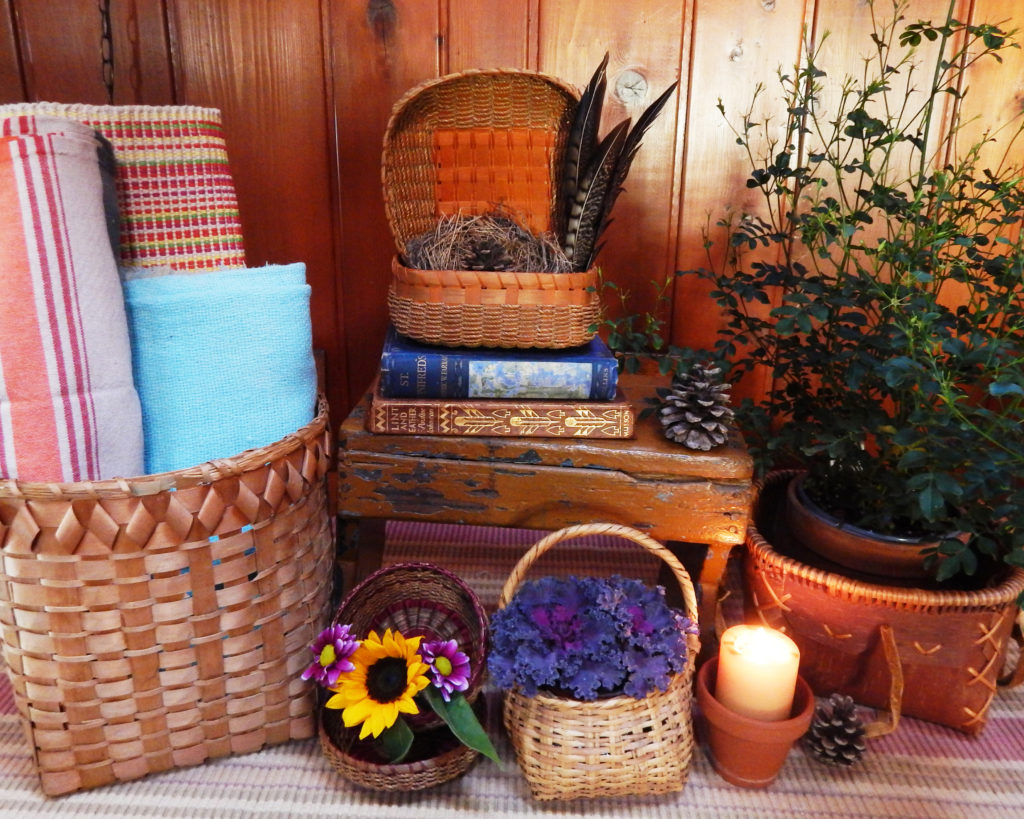
That’s because making and selling fancy baskets as tourist souvenirs in the Adirondack resort towns contributed significantly to the Native American economy in the past two centuries.
Beautiful and functional, Native American and Canadian First Nations baskets have been an indigenous art form for thousands of years. Woodland tribes in the Northeastern U.S. and Southeastern Canada, mostly Algonquins and Iroquois, made vessels to hold food and other essentials from natural materials native to their areas.
Beginning around the 1860s, whole families of indigenous people would be involved in fancy basket making over the winter months and then move down to the Adirondacks and sell their wares as decorative accessories from trucks or stalls set-up in busy tourist areas.
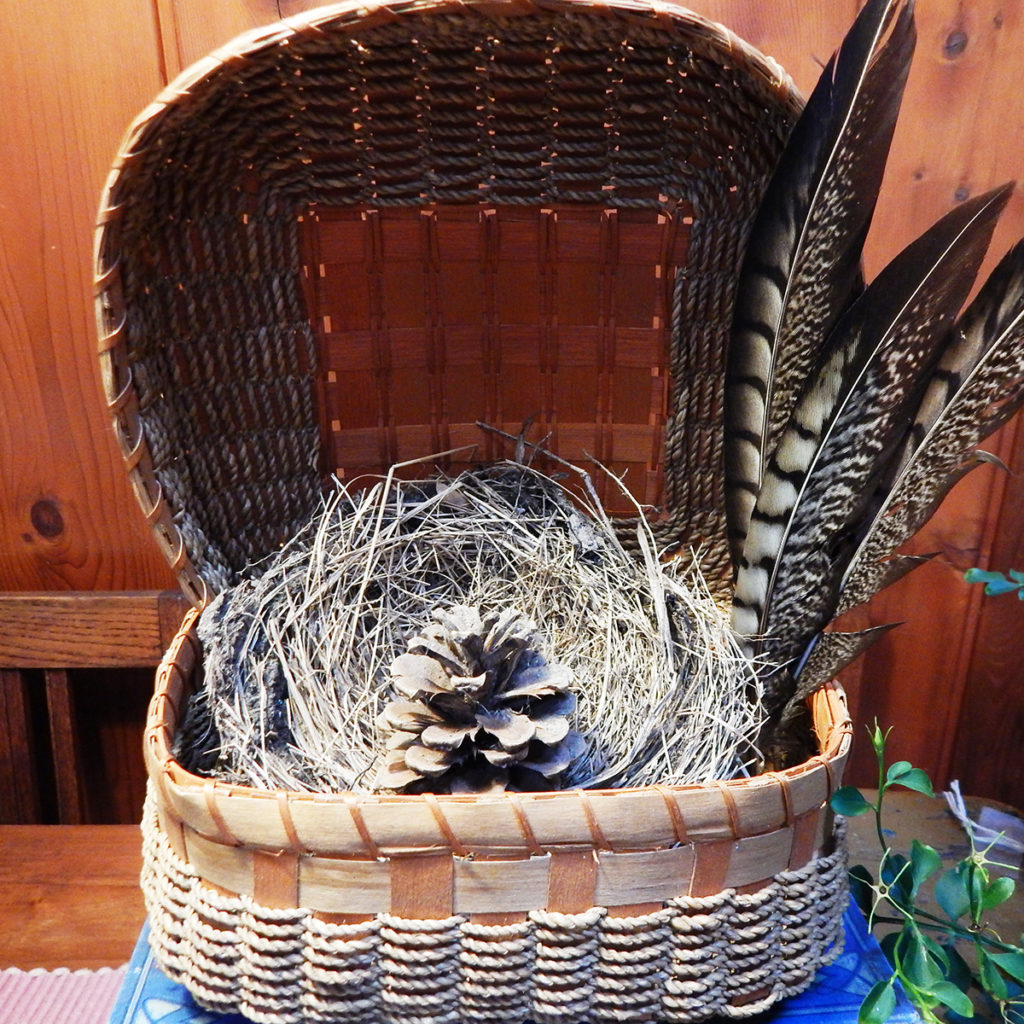
The artistry and workmanship of these vintage and antique baskets is truly amazing. Woodland tribes made their baskets mostly from ash splints and sweet grass. The process was long and arduous. Ash trees, from which the flat woven splints were made, would soak for a year in a marsh or bog. Basket-makers would then peel off the bark and cut the logs into strips. The strips were then beaten until the rings separated, and then cut into almost paper thin strips called splints. Typically men prepared the splints and women wove the baskets.
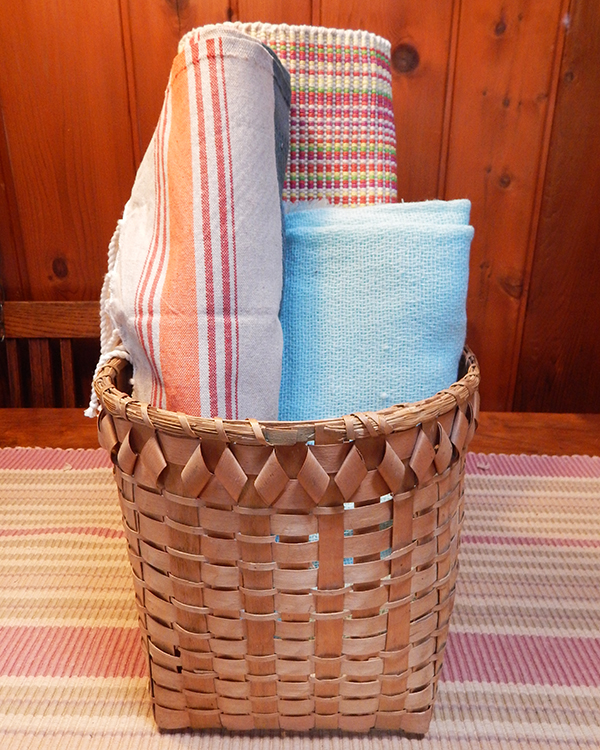
Most woodland baskets are woven in a checkerboard pattern, some with dyed or painted rows for decoration. Another method of decoration among many woodland tribes is the curley-que. The ash strips are so thin and flexible, the wood could be curled to create the three-dimensional detail.
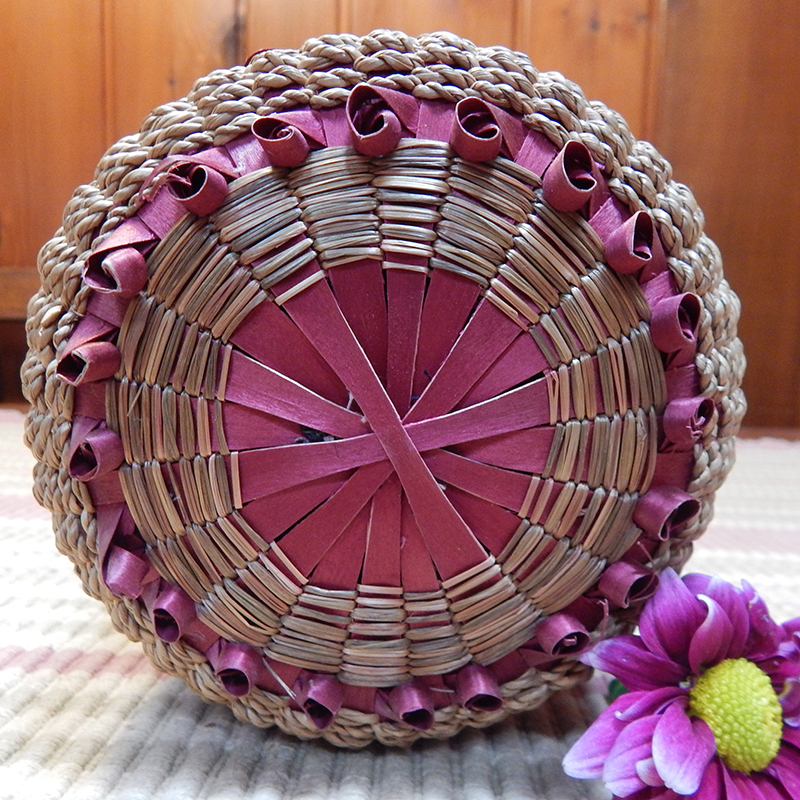
Sweet grass, the other material commonly used in baskets made by woodland tribes, is harvested in the spring and heated over a fire to allow the fibers to separate for weaving. Multiple strands of sweet grass were used to trim basket edges, and could be twisted together to form a twine that was woven between the splints.
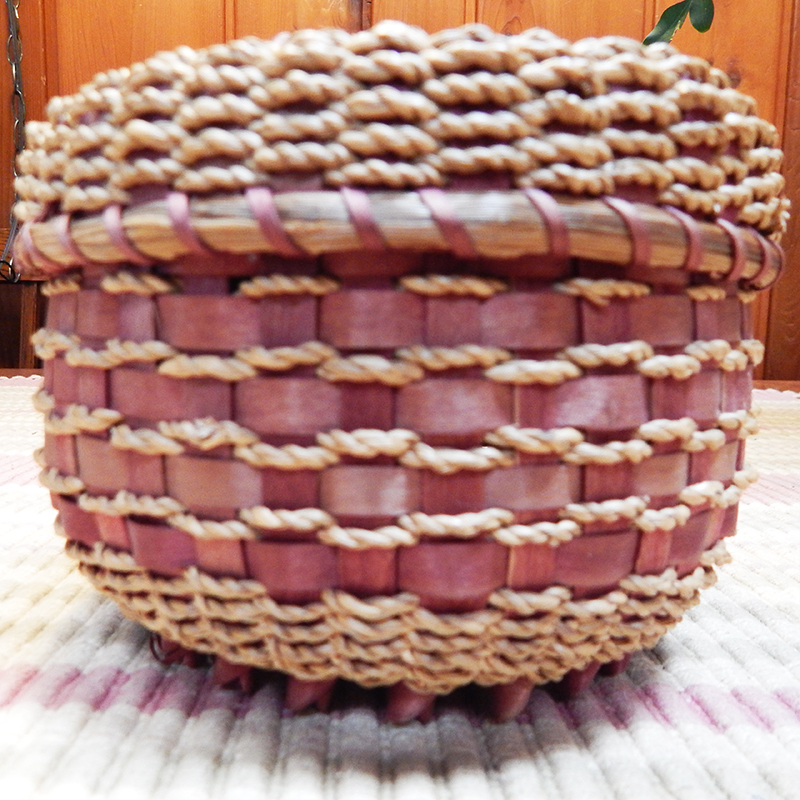
Birch bark baskets are also part of the woodland people’s tradition. Birch trees are fundamentally important in traditional and modern Algonquin cultural practices. Baskets made from birch bark have many purposes including food storage, berry collecting, trading and methods of retaining cultural knowledge.
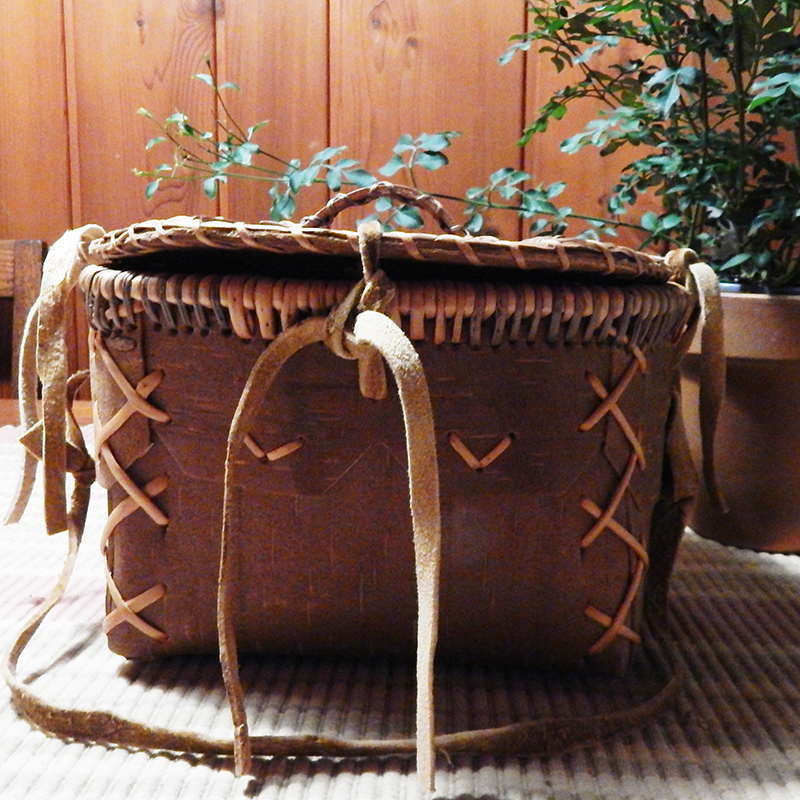
Birchbark is waterproof, rot-resistant, and flexible, making it an ideal material for everything from dishes and baskets to wigwams and canoes. Basket-making is now recognized as an important traditional art form and a source of cultural identity and pride for aboriginal people.
All of the beautiful antique and vintage Native American and First Nations baskets featured in this post will be available this weekend in our Etsy shop. Please stop by and take a look.
(Special thanks to Diane at adirondackgirl@heart, whose wonderful blog post, “Collecting Vintage Native American Baskets” informed this article.)

Like This Post?
Please subscribe to our blog to receive new posts by e-mail. We will not share your information with anyone.